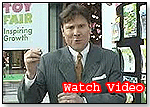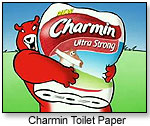|
|
Yesterday's Marketing is Dead: Part 1 A Strategic Approach Can “Cut Through the Clutter”
 Dramatic social, economic and technological forces have transformed our modern-day business culture so it barely resembles that of yesterday. Yet, our entire understanding of marketing is based on what resonated with us yesterday. I read about an exciting marketing seminar that's coming to town. But the newspaper is about yesterday's news. Is the seminar still scheduled? Will its principles still apply? Dramatic social, economic and technological forces have transformed our modern-day business culture so it barely resembles that of yesterday. Yet, our entire understanding of marketing is based on what resonated with us yesterday. I read about an exciting marketing seminar that's coming to town. But the newspaper is about yesterday's news. Is the seminar still scheduled? Will its principles still apply?The only force changing faster than change is the rate at which change is changing. AN EQUATION THAT ADDS UP Despite the ominous tone, there exists good news for today's savvy event marketers. The Y2 Marketing Corporation calls it “the marketing equation,” which I believe to be a breakthrough in the science of marketing.  It’s a formula for cutting through the clutter of today's media-dense, attention-span-battered and time-impoverished environment. But before we touch the equation, let's make a critical distinction in terminology as it relates to marketing. Then, let's evaluate what marketing is really supposed to do. It’s a formula for cutting through the clutter of today's media-dense, attention-span-battered and time-impoverished environment. But before we touch the equation, let's make a critical distinction in terminology as it relates to marketing. Then, let's evaluate what marketing is really supposed to do. WHY SOME MARKETING FAILS When marketing doesn't work, it's almost always a failure of content — not the medium. “Strategic marketing” is what you say and how you say it. It is the content of your marketing message, whether you're marketing an event, product or service. “Tactical marketing” is where your marketing message is placed (i.e., trade show booth, signage, billboards, print advertising, website, etc.). It's where you said what you said and how you said it. The vast majority of people mistakenly equate the word “marketing” with only “tactical marketing.” Whenever marketing doesn't work, the medium is almost always blamed for lack of performance: “That magazine didn't work for us” or "That show wasn't right for us.” Such statements are made without any regard for the actual marketing message.  Just because it didn't work does not mean that it won't! Just because it didn't work does not mean that it won't! A blank page in any magazine will yield zero responses 100 percent of the time. Almost always, the strategic component is more important than the tactical component in the ultimate success of any marketing campaign. Case study after case study demonstrates exponential increases in response rates by simply changing what you say and how you say it. Remember, you must: - Have something good to say. - Say it well. - Say it often (repetition in media placement). GRAB THEIR ATTENTION The number-one job of marketing is to capture the attention of the target audience. It's more difficult than ever to accomplish this in an environment in which the average consumer is bombarded by more than 5,000 promotional messages each day. It's not only harder than it’s ever been to capture the elusive attention span, it is also harder to maintain it.  The second job of marketing is to facilitate the prospect's information-gathering and decision-making process. Human nature dictates that people want to make the best decision, and marketing must assist in educating the target market as to how the respective offering stacks up to competitors. The second job of marketing is to facilitate the prospect's information-gathering and decision-making process. Human nature dictates that people want to make the best decision, and marketing must assist in educating the target market as to how the respective offering stacks up to competitors.Lastly, marketing must lower the prospective buyer's risk of taking the next step in the sales cycle. Next month, we’ll take a look at the history of advertising and discuss how companies can distinguish their marketing message from others. And in the subsequent installment, we’ll get to that valuable marketing equation and why it’s so important for effective total-event marketing. Watch a video of Charles W. Allen from Toy Fair 2008: TIA’s Exhibiting R.O.I.Q. Academy: Cutting Through the Clutter. Next month: See Charles W. Allen work the Voxal booth at Toy Fair! Videography and editing by Alison Marek. Sound by Joe Fiorello.  Writer's Bio: Charles W. Allen is an independent consultant for professional event marketing solutions and specializes in sales training, motivational speaking and maximizing sponsorship sales. He also serves as executive director of the International Economic Alliance, which originated at Harvard University. Read more articles by this author Writer's Bio: Charles W. Allen is an independent consultant for professional event marketing solutions and specializes in sales training, motivational speaking and maximizing sponsorship sales. He also serves as executive director of the International Economic Alliance, which originated at Harvard University. Read more articles by this author |
| |||||||||||||||||||||||||||||||||
Disclaimer Privacy Policy Career Opportunities
Use of this site constitutes acceptance of our Terms of Use.
© Copyright 2025 PlayZak®, a division of ToyDirectory.com®, Inc.



